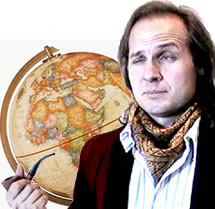Some travel writers seem to forget that we’re travel writers first and foremost, and not critics.
Our job, as travel journalists, is to show and describe our destinations to our readers.
We should be painting a picture of the places, showing our subscribers the people, the culture, the food, and all those other neat things we see, hear, and smell and taste.
Where a few travel writers come off the rails is when things go wrong on a trip, or when a place doesn’t measure up to their “standards”. They feel obliged to rant about them like entitled children that didn’t get the Christmas present they wanted.
Many so-called travel writers complain excessively about trivial things and very minor inconveniences at luxury resorts and other destinations. I’ve seen this happen on press trips; I’m loving a place, boogying happily along, and then one of the writers starts moaning about some minor inconvenience, real or imagined. The rest of us cringe when these self-indulged writers wind up their tantrums.
Is there any point in nitpicking about how your Mai-tai was not mixed perfectly, or how the swimming pool was slightly too hot for your preference?
Or the wine you’re drinking did not taste like what you had in France last year?
Perhaps the room service took five long minutes to bring your snack?
Perish forbid these awful things could happen.
But my favorite complaint by far, is when travel writers and bloggers describe popular tourist destinations as “too crowded.” Seriously? Did you really think you’d have Paris all to yourself? Or Rome?
Travel Writing Secret #1
Here’s the deal, travel writers and bloggers. You’re never going to experience a perfect resort or destination. They just don’t exist. Our devious little mind will always come up with something to criticize about a place.
If you don’t believe me, try this: randomly scan through the TripAdvisor comments about any tourist attraction, resort, or country, and you’ll find people grumbling about some of the most trivial and inconsequential things imaginable, at some of the most fantastic places on god’s green earth.
“Well, ok“, you might say, “but what if we see things that are sub-par at our destination? Aren’t we obliged to tell our readers about them?”
Actually, no, we’re not.
What do I do if I see minor problems or inconveniences at my destinations? I simply don’t mention them in my stories. These annoyances are usually temporary aberrations, and can be due to a myriad of reasons. Besides, no one wants to read about this sort of trivia anyway.
If you’ve done your homework, and researched a place before you travel, you should be able to get a good idea of whether it meets your “standards” or not. If a resort or hotel is poorly run and has problems, you’ll soon find this out on the internet.
That’s why I love TripAdvisor.com and other websites of that ilk. They show a destination’s glory and warts—often in the same paragraph! Nothing is sacred on TripAdvisor.com.
So, if your research shows that a place looks dodgy, why go? Withdraw your name from the press trip. Just don’t put the rest of the travel journalists—or your traveling companions—through your hypercritical misery. Thank you.
My point is, most resorts, spas, and hotels and destinations, are pretty darn good. Tourists these days are very demanding and have high expectations. The vast majority of tourist attractions and accommodations are continually working on upgrading their services and amenities. They must do this to keep up in the super-competitive world tourism arena.
So, you’d have to be especially creative and whiny to find fault with most luxury destinations and resorts, short of those unfortunate acts-of-god-and-nature and man-made catastrophes that occasionally happen; things like terrorism, demonstrations, revolutions, tsunamis, earthquakes . . . you get the idea.
Travel Writing Secret #2
Then there are the travel critics who believe their travel “experiences” should be absolutely “authentic”. This indicates a poor grasp on reality or a complete lack of understanding of the state of contemporary tourism.
Here’s the deal, travel writers and bloggers. There are no authentic travel experiences left. If even one tourist has visited a place, it’s no longer authentic.
The moment the locals cotton on to the fact that they can make money from those sweaty, money-laden tourists with expensive cameras hanging round their necks, they start hanging up racks of t-shirts, tacky trinkets, kinky key rings, cutesy carvings, sexy sculptures, neon paintings, and native costumes—in short, anything tourists will buy. (Ironically, many of those souvenirs are made in other countries.)
Why is a place no longer authentic after it’s been discovered?
Here’s why. The locals change their cultural activities and costumes to make them appear more dramatic. They shorten their dances and rituals to cater to tourist’s dwindling attention spans. They forget their native lingo and learn English to barter with the tourists. They start wearing blue jeans and Armani t-shirts. They eat burgers and drink coke. Hey presto, no authentic culture anymore. Sad but true.
I’m witnessing this in real time in Cambodia, Laos, Vietnam, and Myanmar. Last week I walked through a shopping mall in Phnom Penh, Cambodia, that would blow away all but the most upscale American malls. And Cambodia is a third world country. So, my travel writing friends, ditch the expectation that we can find native people frozen in time. The best we can do is describe the experience as we find it at the time we visited. Be on the trip you’re on. Keep it real, not what the stereotypes suggest.
Nowadays, if you want “authentic” travel experiences like playing polo on horseback, bashing around a sheep’s head with a big stick, you’re going to have to go further off the beaten track to places like Mongolia—and even there I bet you’ll find T-shirt shops. Maybe you can find native people untarnished by external influence in the deepest jungles of Papua-New Guinea, but you also run the risk of being zapped by a poison dart.
Travel Writing Secret #3
And here’s perhaps the most unpalatable factoid about contemporary travel writing; it’s all about marketing—in one way or another.
Whenever we pitch a story to an editor, we’re marketing. In today’s market, where print travel media is competing fiercely with the internet, every article we write should help the publisher sell his magazine and help him sell more advertising. So, bear this in mind when you pitch your travel stories. The query with the angle that the publisher can tie in with a potential advertiser is going to get the nod over the “pure” travel story every time.
And think about this: every article we write will help thousands, and perhaps tens of thousands, of people decide whether they want to visit a destination, bringing their precious tourist dollars. So, forget about writing anything negative about a destination—the editor’s not going to publish bad stuff anyway. No one wants to read about the bummer things.
Here’s another marketing aspect that you might not be aware of: when we approach a Destination Marketing Organization media rep for complimentary travel assistance, we’re marketing ourselves. We’re selling our ability to produce an article or three about their destination, so they’ll line up those nice resorts, meals, and guides and transport.
It’s marketing, marketing, marketing. Get it? Get it! If you can’t accept these basic truths, you’re in the wrong business.
Placing cynicism aside, it’s still possible for travel writers to write with integrity while we’re “selling” a place to our readers.
~ Roy
About the Author:
Roy Stevenson produces a free weekly newsletter for aspiring travel writers. It’s considered one of the most informative e-zines in the travel writing business.
Subscribe here: http://www.pitchtravelwrite.com/pitchtravelwrite-ezine.html
Roy has published seven eBooks on selling and marketing freelance travel articles. (See right sidebar)
He operates a personalized coaching business for novice travel writers, and every one of his 60+ novice writers has been published in print or online media. Many have scored cool press trips using their assignments as collateral. (http://www.pitchtravelwrite.com/coaching-for-travel-writers.html)
Roy offers Travel Writing & Marketing Master Classes. S.E. Asia (Siem Reap, Cambodia, October 2017), Seattle (April, 2018).
http://www.pitchtravelwrite.com/travel-writing-workshop-cambodia.html






Thanks Roy – very good (and timely) advice……I too see this happening in print on a few travel bloggers own sites/blogs……I do understand their perspective (they believe they’re doing readers a service), however there’s only so far one can get in their writing career if they only ever write for their own blog. And even my favorite restaurants can have an ‘off’ night…..had that been my only experience and I wrote about it, readers might never try what is normally a terrific place.